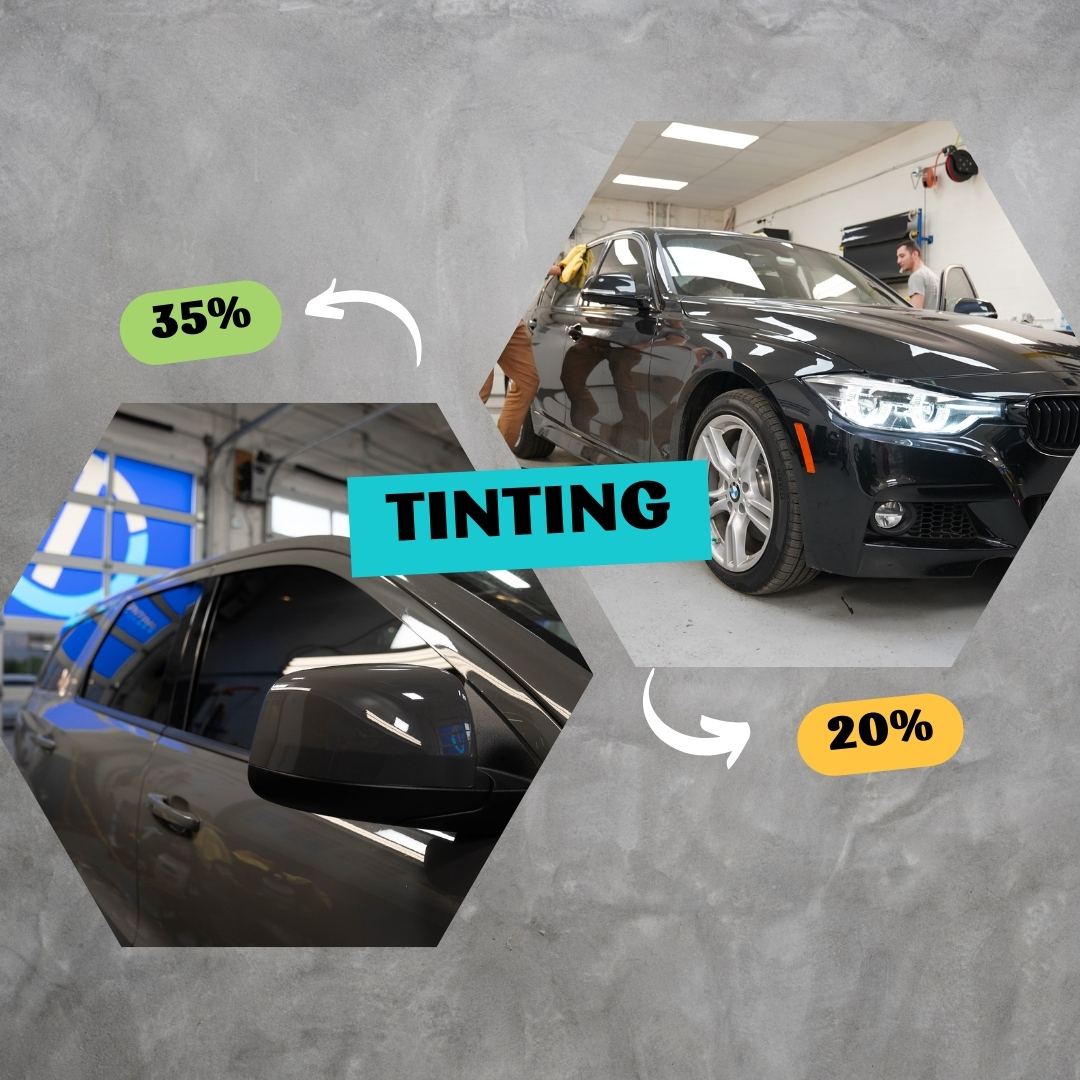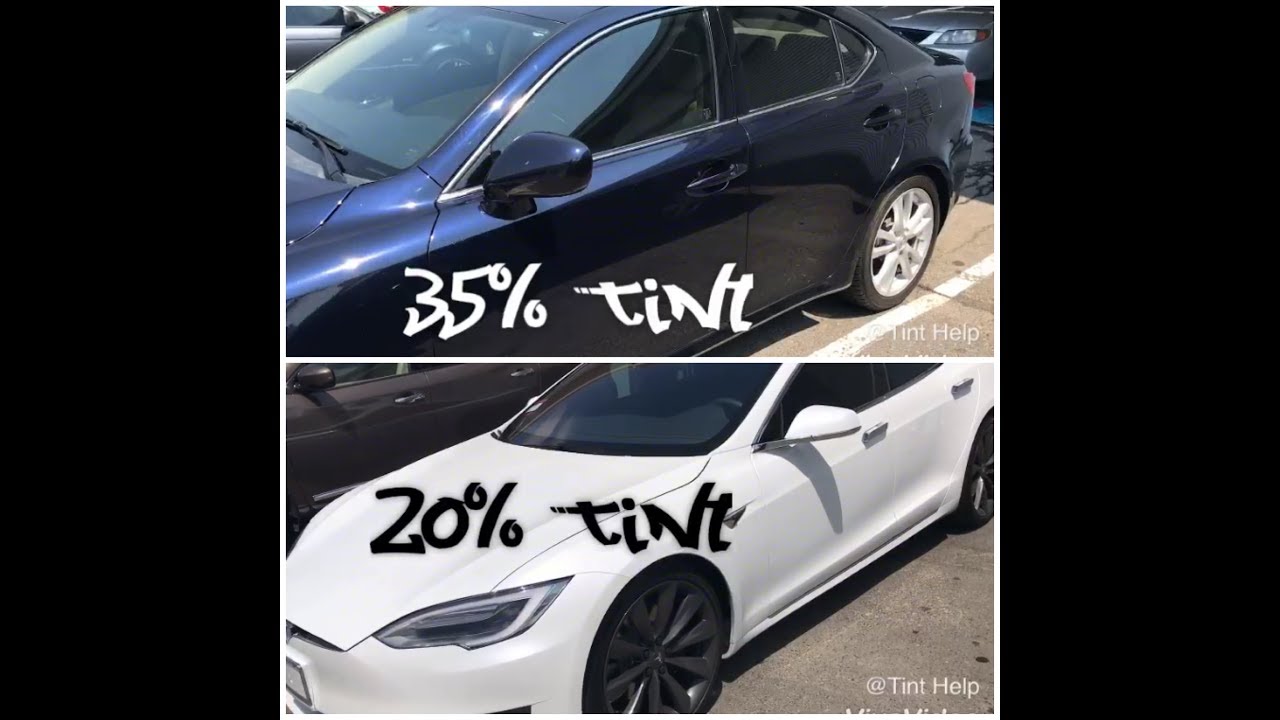When comparing 20% and 35% windshield tint, the main difference lies in the level of visibility and heat reduction. 20% tint provides better privacy and heat reduction, while 35% tint offers slightly better visibility and less heat reduction.
The choice between the two depends on personal preference and local regulations. Additionally, it’s essential to consider the impact on nighttime visibility and the potential legal implications. Selecting the appropriate windshield tint requires weighing these factors to ensure both functionality and compliance with regulations.
With the right tint level, drivers can enhance their driving experience and protect their vehicle’s interior from sun damage.
Contents
Choosing Between 20 And 35 Windshield Tint
Choosing the right tint for your windshield is an important decision with various factors to consider. You want the perfect balance of privacy, UV protection, aesthetics, and glare reduction. Understanding the differences between 20 and 35 windshield tint will help you make an informed choice that meets your specific needs and regulations.
Understand State Laws And Regulations For Tint Levels
Before choosing between 20 and 35 windshield tint, it’s crucial to research the tint laws and regulations in your state. Some states have restrictions on how dark the windshield can be tinted, so make sure to comply with the legal requirements.
Evaluate The Primary Reasons For Tinting Windshields
- Privacy concerns
- UV protection
- Aesthetics and vehicle appearance
- Glare reduction from sunlight and headlights
These factors play a significant role in your decision-making process. Understanding your primary reasons for tinting your windshield will help you determine whether 20 or 35 tint level is more suitable for your needs.
Factors To Consider Before Making A Decision
Several factors should be taken into account before choosing between 20 and 35 windshield tint:
- Car model and windshield angle
- Climate and typical sun exposure
- Personal driving habits and times
These factors can influence the effectiveness and suitability of the tint level based on your specific circumstances.
Key Differences In 20 Vs 35 Tint Visibility
When it comes to choosing the right windshield tint, the level of visibility plays a significant role. Key Differences in 20 Vs 35 Tint Visibility is crucial for making an informed decision. Understanding the contrast in daytime and nighttime visibility, the influence on driver’s vision and safety, and the effects on interior light levels and ambiance can help you determine which tint best suits your needs.
Contrast In Daytime And Nighttime Visibility
Daytime visibility with 20% tint is reduced more compared to 35% tint, as the lower percentage allows less light to pass through the window. Conversely, for nighttime visibility, 20% tint provides better privacy and glare reduction, while 35% tint offers a slightly brighter view.
Influence On Driver’s Vision And Safety
20% tint may slightly affect the driver’s vision, especially in low-light conditions, and can reduce the overall visibility outside the vehicle. On the other hand, 35% tint provides better clarity and visibility, enhancing safety on the road by minimizing potential obstructions to the driver’s vision.
Effects On Interior Light Levels And Ambiance
With 20% tint, the interior ambiance is significantly darker, creating a more secluded and private feel. In contrast, 35% tint maintains a brighter interior atmosphere, preserving the natural light and openness inside the vehicle.
Performance And Protection: Tint Strengths
When it comes to choosing the right windshield tint for your vehicle, understanding the performance and protective strengths of different tint levels is crucial. The comparison between 20 and 35 windshield tint film in terms of UV and infrared ray blocking abilities, durability and longevity, scratch resistance, and maintenance needs plays a pivotal role in making an informed decision.
Comparison Of Uv And Infrared Ray Blocking Abilities
The level of UV and infrared ray blocking abilities is significant when choosing between 20 and 35 window tint. 20% tint film offers a higher level of protection, blocking a larger portion of UV rays and infrared heat compared to 35% tint film. This ensures superior interior protection, reducing the risk of fading and damage to the vehicle’s upholstery and dashboard.
Durability And Longevity Of 20 Versus 35 Tint Films
When evaluating the durability and longevity of windshield tint films, 20% tint film generally offers a thicker and more robust construction, providing enhanced longevity and resilience against environmental factors. This results in a longer lifespan and sustained performance compared to 35% tint film, making it a more suitable option for those seeking long-term protection and value.
Analysis Of Scratch Resistance And Maintenance Needs
In terms of scratch resistance and maintenance needs, 20% tint film exhibits a higher level of scratch resistance due to its thicker construction and 35% tint film may require more frequent maintenance to preserve its appearance. While both options offer protection, the thicker construction of 20% tint film minimizes the appearance of scratches and reduces the need for frequent maintenance, providing a hassle-free solution for vehicle owners.
Aesthetic Impact On Your Vehicle
Choosing the right windshield tint for your vehicle can have a significant impact on its overall aesthetic appeal. The level of tint you select can greatly influence the visual allure of your car, as well as how it is perceived by others. Understanding how different tint levels affect a car’s visual appeal, the perception of tint density from different exterior views, and its compatibility with the vehicle’s color and design themes is crucial in enhancing the aesthetics of your vehicle.
How Different Tint Levels Affect Car’s Visual Appeal
The level of tint you choose can dramatically alter the aesthetic appeal of your vehicle. 20% and 35% tint levels are two popular options, each offering a unique visual impact. For those aiming for a sleek and sophisticated look, 35% tint can provide a balance between visibility and style. On the other hand, 20% tint offers a more dramatic and striking appearance, often preferred by those seeking a bolder visual statement.
Perception Of Tint Density From Different Exterior Views
The perception of tint density varies based on the exterior viewing angle. From the outside, 20% tint appears darker and more opaque, creating an air of mystery and privacy. Conversely, 35% tint offers a subtler appearance from the exterior, providing a blend of style and visibility. It’s important to consider how the tint will be perceived from different angles and lighting conditions to choose the most visually appealing option for your vehicle.
Compatibility With Vehicle Color And Design Themes
The choice between 20% and 35% tint should also take into account the vehicle’s color and design themes. 20% tint may complement darker-colored vehicles or those with a more aggressive aesthetic, while 35% tint might harmonize better with lighter-colored cars or those with a more understated design. Ensuring that the selected tint level aligns with the overall color and design themes of your vehicle will enhance its visual appeal and cohesiveness.
Making The Right Choice For Your Car
It’s important to make the right choice when it comes to tinting your car’s windshield. Understanding the differences between 20 and 35 tints can help you make an informed decision that balances legal requirements with personal preferences. Consulting with professional installers, assessing cost differences and warranties, and carefully considering the pros and cons of each option are essential steps in making the right choice for your car.
Consultation With Professional Installers For Recommendations
Consulting with professional installers is crucial in determining the best windshield tint for your car. They can provide expert recommendations based on the specific make and model of your vehicle, as well as local tinting regulations. Their professional insight can help you make an informed decision about whether a 20 or 35 tint is suitable for your needs.
Balancing Legal Requirements With Personal Preferences
When choosing between 20 and 35 tints, it’s important to strike a balance between legal requirements and personal preferences. While darker tints offer enhanced privacy and UV protection, they may not comply with local regulations. Professional installers can advise you on legal limits for windshield tints in your area, ensuring that your personal preferences align with legal compliance.
Assessing Cost Differences And Warranties For 20 Vs 35 Tints
Assessing the cost differences and warranties for 20 and 35 tints is an essential step in making an informed decision. While 35 tints may be more budget-friendly, 20 tints provide enhanced protection and heat reduction. Comparing the cost and warranty offerings for each option ensures that you make a choice that aligns with your budget and long-term needs.

Credit: www.tintingchicago.com
Conclusion
When considering whether to opt for 20 or 35 windshield tint, you will want to weigh the benefits against your specific needs. Ultimately, the decision should be based on your preferences, local regulations, and the level of privacy and UV protection you seek.
With the right tint, you can enhance both the aesthetics and functionality of your vehicle.


Leave a Reply